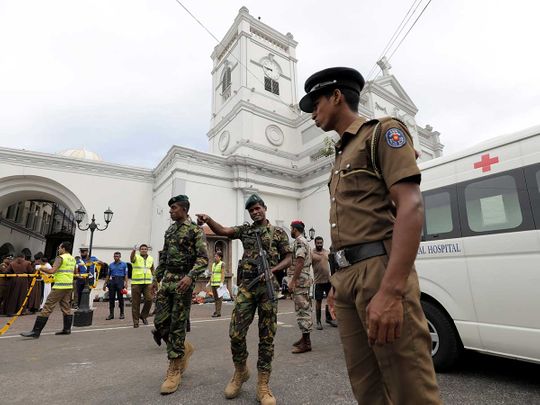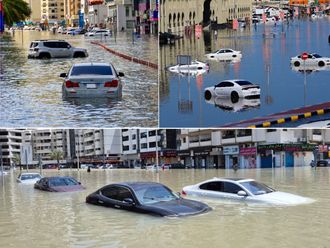
Scores of people were killed and more than 500 injured in six near simultaneous blasts that rocked three churches and three hotels in Sri Lanka on Easter Sunday, in the worst violence since the civil war ended a decade ago.
Two of the blasts were suspected to have been carried out by suicide bombers, according to an official who spoke on condition of anonymity to media.
However, no one has claimed responsibility for the blasts.
Prime Minister Ranil Wickremesinghe condemned the “cowardly attacks” and warned: “Please avoid propagating unverified reports and speculation.”
President Maithripala Sirisena, meanwhile, said he had ordered the police special task force and military to investigate who was behind the attacks and their agenda.
Here are some key facts about Sri Lanka and the decades of violence that the island nation has suffered:
What is the ethnic demography of Sri Lanka?
Out of Sri Lanka’s total population of around 22 million, 70 per cent are Buddhist, 12.6 per cent Hindus, 9.7 percent Muslim, and 7.6 percent Christian, according to the country’s 2012 census.
What about ethnic divisions?
Ethnic and religious divisions have plagued the island nation for decades — the Catholic community, for instance, is split between the Sinhalese majority and the Tamil minority.
Has there been protracted violence before?
Yes. Sri Lankan security forces in 2009 defeated Tamil Tiger rebels who had fought to create an independent homeland for the country’s ethnic minority Tamils. The UN initially estimated the death toll from 26 years of fighting to be about 100,000 but a UN experts’ panel later said some 45,000 ethnic Tamils may have been killed in the last months of the fighting alone. Government troops and the Tamil Tigers were both accused of grave human rights violations, which prompted local and international calls for investigations.
Why is everyone comparing the attacks with LTTE bombings?
This is the worst violence in Sri Lanka since the end of the civil war a decade ago. The magnitude of the bloodshed on Sunday recalled the random bombings perpetrated by the separatist Tamil Tigers (Liberation Tigers of Tamil Eelam) that targeted a bank, a shopping mall, a Buddhist temple and hotels popular with tourists. St. Anthony’s Shrine and the three hotels where the blasts took place are in Colombo, and are frequented by foreign tourists.
Why is the timing of the attacks so critical?
The bombings and violence in Sri Lanka — which will remind many of the brutal civil war era — come after a sustained period of political uncertainty following the Sri Lankan president’s decision to fire his prime minister, said Manoj Joshi, a distinguished fellow with the New Delhi-based Observer Research Foundation think-tank. “Sri Lanka is just about recovering from a civil war and so obviously this is not a good sign for a country that could have an ASEAN-like growth track if it got down to it,” he said.
Are there any concerns about minorities in Sri Lanka?
In its 2018 report on Sri Lanka’s human rights, the US State Department noted that some Christian groups and churches reported they had been pressured to end worship activities after authorities classified them as “unauthorised gatherings”. The report also said Buddhist monks regularly tried to close down Christian and Muslim places of worship, citing unidentified sources. However, the Sri Lankan government has strongly denied instances of such incidents.
What is the likely economic impact of the attacks?
The attacks will be a blow to the tourism industry and affect the stability of the rupee, said Adrian Perera, chief operating officer at Equicapital Investments in Colombo. “If the security situation is not stable, foreign direct investment will also take a hit, especially to the real estate industry,” Perera said. “The government budget will be derailed. Foreigners will dump stocks and bonds.” Sri Lanka's gross domestic product growth in the quarter to December was the slowest in 19 quarters, while full-year expansion cooled for a third straight year in 2018. The rupee has risen about 4.75 percent so far this year, recovering on foreign flows to bonds and remittances during the just concluded local New Year festival, after dropping to consecutive record lows last year amid a political crisis.
- Compiled from agencies








